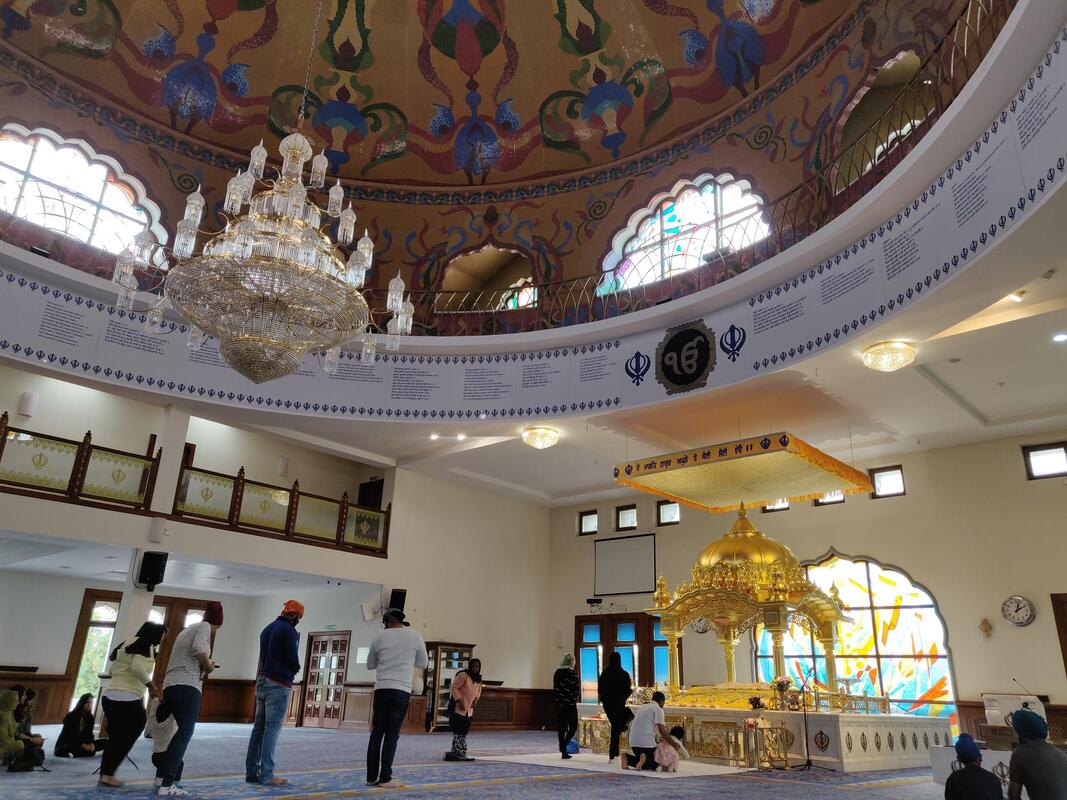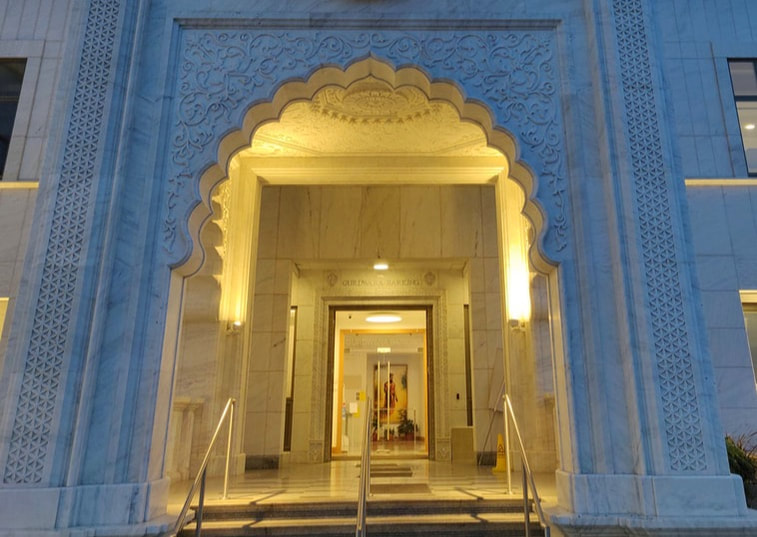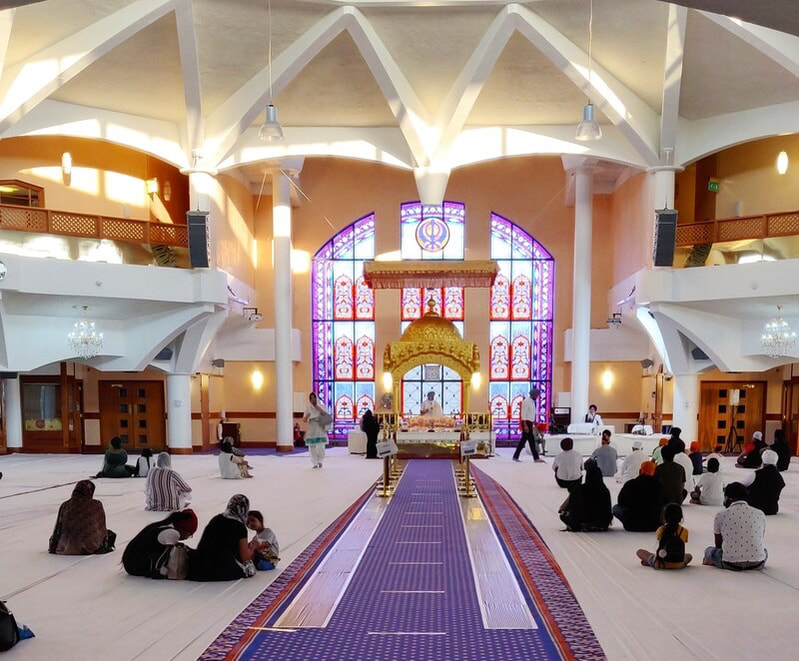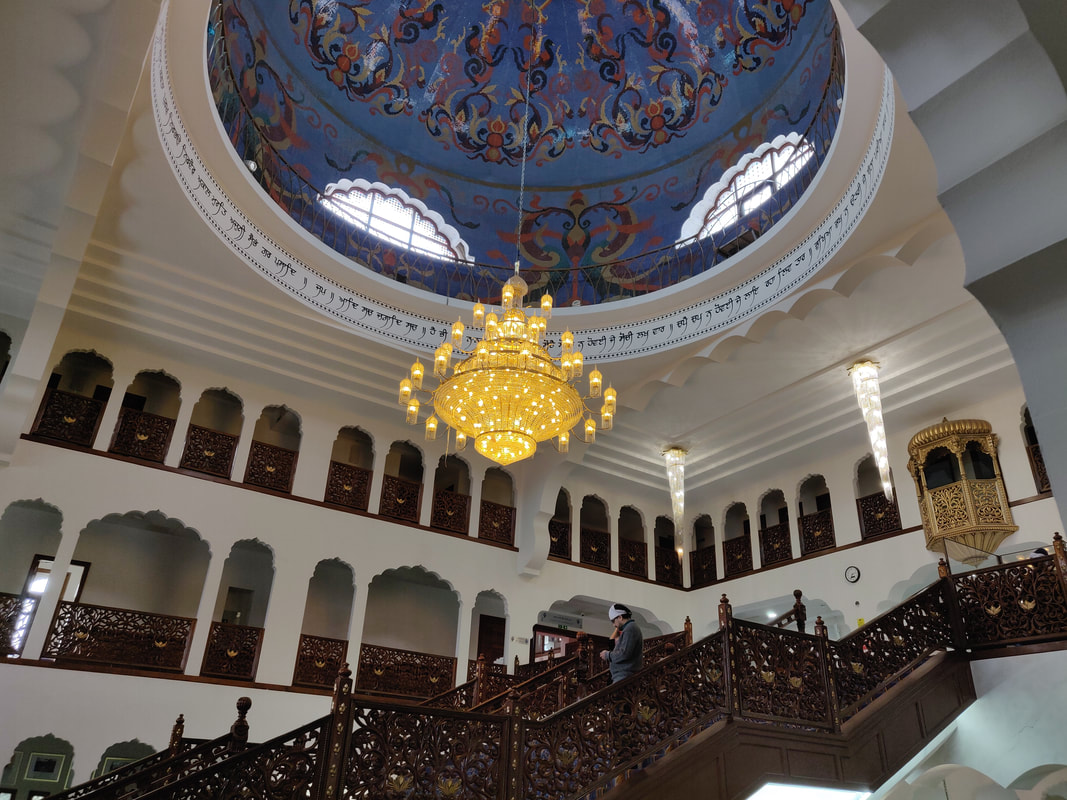Gurdwaras in London & the South EastThis is the third part of a series looking at Gurdwaras in the UK. London has a sizeable Sikh population, rivalling the Midlands as a centre of both Panjabi culture and the Sikh faith in the UK. Areas like Southall, Hounslow and Ilford all have large Sikh communities, and these towns have several Gurdwaras each. Outside of London, both Slough and Gravesend are well known within Panjabi circles for their Sikh communities. In this article, I explore 5 Gurdwaras in London and the South-East. You can read part 1 of my series on UK Gurdwaras here (Midlands). You can read part 2 of my series on UK Gurdwaras here (more Midlands). Background to the articleLondon is home to some of the earliest and most influential Sikh communities in the UK. Initially, many Sikhs flying from the subcontinent and Africa would land in Heathrow and find jobs in the airport itself, settling down in nearby towns like Hounslow and Southall. The community grew rapidly in the latter half of the 20th century and by the 1980s Southall was already known as Little Panjab. Today Sikhs are widely dispersed throughout the south east. While Southall remains the heartbeat of Panjabi culture in the capital, Sikhs now make up sizeable communities in both east and west London. Sikhs have also spread outside the M25 into nearby Slough in the west and Gravesend in the east, opening new Gurdwaras and community projects, including the world famous Khalsa Aid (based in Slough). While the Midlands has been more known for its music, Sikhs from London have been especially prolific in the arts, with artists like Inkquisitive, fashion photographers like Singh Street Style and actresses like Gurlaine Kaur Garcha. As I did for the two previous articles, I want to set out a clear understanding of this list. This list is based solely on the architecture of the Gurdwara and does not consider aspects like the political stance of the Gurdwara or any committee issues. I'm not a local to many of these Gurdwaras so I might not understand where committees are good or bad, I can only make a judgement on my brief visits. Secondly, I understand that Gurdwaras are supposed to be humble places to meditate and connect with the timeless. I also agree that any excess money should be spent on community projects to uplift the most vulnerable in society and not add golden domes to Gurdwaras. I think this current generation is effecting this change with community projects bring set up all over the UK (you can see a list of them here). For a more detailed background to these articles, I strongly suggest reading the background section of my first article on UK Gurdwaras here. 5. Gurdwara Sikh Sangat, BowIn March 2009, Gurdwara Sikh Sangat (better known as Harley Grove Gurdwara) was set alight in an arson attack. Sikhs chased the intruder out of the Gurdwara, but the damage was done, and as the fire subsided, 75% of the building had been destroyed. I remember being at home in the Midlands and seeing pictures of saroops of Guru Granth Sahib that were caught in the fire. The funeral service for those saroops affected Sikhs throughout the UK and I can clearly still feel that emotion. The local community showed its resilience and the Gurdwara reopened just 4 years later and for several years this was my local Gurdwara following my move to London. The new design features taller gates that are locked for much of the day (the Gurdwara opens during morning and evening services). The Gurdwara is located at the end of a quiet residential street and seems completely out of place from its surroundings - but the architecture is stunning. Its history dates back to 1854 when it was built as a church before it was converted into a Jewish Synagogue in 1927 and finally a Sikh Gurdwara in 1977. The Gurdwara has two darbar sahibs and two langar halls, with the main darbar sahib a beautifully decorated and relatively simple room that affords little distraction during times of peaceful meditation and prayer. A short DLR ride gets you into both the City and Canary Wharf which provides Sikh professionals with the opportunity to visit their Guru during the working week. You can find out more about the Gurdwara on its official website here. 4. Central Khalsa Jatha, Shepherd's BushCentral Khalsa Jatha is the oldest Gurdwara in the UK (and Europe), with the Jatha dating back to 1908, and their first Gurdwara in Shepherd's Bush opening in 1913. For the next half a century the Gurdwara served the expanding Sikh community, starting weekly diwans in the 1950s - about the first time they got their first full time Granthi Singh. The Gurdwara moved to its current building in 1969 and although it is also located in a very residential part of the London, the Gurdwara seems to blend into its surroundings. The modern exterior was redeveloped in the early years of the new millennium, and this is also reflected in a relatively small but very clean interior. The darbar sahib has a beautiful colour scheme of claret and white, and evening diwans are fairly well attended. During my latter years in London I moved to a neighbourhood a short distance from the Gurdwara and began visiting on a weekly basis until the pandemic forced its closure. During that time the Gurdwara moved to serving mobile langar to the local community and those in need. I returned to a much quieter Gurdwara, but one that continues being heavily visited from non-Sikh members of the local community. As the Gurdwara is the closest to central London, it also receives a lot of visitors from abroad, particularly India and Pakistan. If you're visiting I would suggest getting the train on the underground as parking can be quite difficult to find. You can find out more about the Gurdwara on its official website here. 3. Sri Guru Singh Sabha, SouthallSri Guru Singh Sabha - better known as Southall Gurdwara - is the largest Gurdwara in the UK and Europe. The present Gurdwara was opened by the Prince of Wales in 2003 at a cost of £17 million, but the history of the group that runs the Gurdwara (and the nearby Park Avenue Gurdwara as well as a local school) dates back to the 1950s with the arrival of Malaysian and Singaporean Sikhs. From small houses, to larger buildings, to the largest Gurdwara in the country, the organisation (Sri Guru Singh Sabha Southall) has done incredibly well. Today the Gurdwara has about 15,000 attendees every week who pay their respects to the eternal Guru, while 20,000 meals are served each week from the langar hall. In the entrance and langar hall pictures of important Sikh figures are everywhere - from the earliest Sikhs, all the way to those who defended Sikhi during the 1984 attacks and subsequent genocide - a great way to teach the many non-Sikhs who visit the Gurdwara a short history. The Gurdwara was built during the phase of development in the early 2000s where box shaped Gurdwaras were being built across the country and so the architecture on the outside can probably best be described as "big". But the inside is beautiful, with high ceilings and large open spaces. The darbar sahib is one of the best in the world and certainly the best on this list. Designed specifically to have Guru Granth Sahib as the focus, the darbar sahib is also shaped to support acoustics, ensuring sound travels evenly throughout the sangat. 3000 people can fit into the darbar sahib, and its circular shape, high ceilings and beautiful stained glass window behind the Guru's throne makes it one of the most spectacular darbar sahibs in the world. You can find out more about the Gurdwara on its official website here. 2. Sri Guru Singh Sabha, BarkingThis Gurdwara is a part of the coalition of Singh Sabhas of east London, and is a companion to the Seven Kings Gurdwara, with both Gurdwaras serving the community of east London.. Opened in May 2021 at a cost of £14 million, Barking Gurdwara is the newest Gurdwara on this list and another example of a lot of money being spent in the construction of what is supposed to be a humble place of worship. That being said, in terms of architecture, this Gurdwara is absolutely stunning. Located on a busy main road a short distance from Barking train station and the main High Street, it isn't an obvious place for a Gurdwara, but it's a good location as it means it occupies a place with a heavy foot fall where its open doors might pique the interest of non-Sikhs in the community. Not that it would be easy to miss. The Nishaan Sahib is incredibly tall and the white marbled exterior a big change from the slightly greyer surroundings. The entrance features an impressive marble edifice that leads into a marble floored interior with large modern paintings representing Sikh history, including a number of paintings by Kanwar Singh "Art of Punjab" (I wrote about his Birmingham exhibition here). The marble permeates throughout the construction of this Gurdwara and almost 900 tonnes of it was imported from India to help create the architectural vision of designer Narinder Assi. Unlike some of the older constructed Gurdwaras in the Midlands, Barking Gurdwara has a modern, minimalist and airy feel, it even has what looks like a little reception desk at the front entrance. During my visit a sevadaar provided me with a bit of a history of the Gurdwara and welcomed me in to have langar in a hall that can accommodate 700 people. The two main darbar sahibs are very modern in design, but smaller in size than the main darbar sahib in Southall Gurdwara. Nevertheless, they are designed beautifully to ensure all focus is on Guru Sahib and this makes for a peaceful and relaxing experience. The Gurdwara also hosts Panjabi, Gurmat and Gatka classes to ensure knowledge is shared and passed onto new generations of Sikhs. You can read more about the Gurdwara on its official website here. 1. Guru Nanak Darbar, GravesendBack in 2012, rumours started circulating in the Midlands about a new Gurdwara that had opened in the south east, a Gurdwara that was unlike any other in the UK. Pretty soon coach loads of sangat were leaving from Gurdwaras all across the country and all would return with stories about a Gurdwara that made them feel like they were back in Panjab. It was several years before I visited Guru Nanak Darbar (better known as Gravesend Gurdwara), and on every subsequent visit I am still as blown away as I was on the first day. This Gurdwara is something else. It wasn't cheap - at a cost of £14.5 million it is the second most expensive Gurdwara on this list - but the results are astounding. The entrance to the Gurdwara is through an ornately designed marble gate and as soon as you drive (or walk) through, it doesn't feel like you're in England anymore. The sandy coloured exterior has 5 domes ranging from 6-18 metres and is designed to mirror Gurdwaras in Panjab, particularly Harimander Sahib. Inside is one of the most intricately designed interiors of any Gurdwara in the UK. Large wooden staircases are broken up by marble floored landings, while opulent chandeliers hang from a high domed ceiling that is decorated by passages of Gurbani. There are three darbar halls and two langar halls, all named after famous Sikh figures including Bhai Gurdaas Ji, Bhai Fauja Singh, Sant Bhindranwale. Baba Zorawar Singh and Bibi Nanaki. Illustrations of key events in Sikh history line the perimeter of the interior and tell the stories of the struggles and successes of the community. The darbar sahibs are smaller than those in Southall (the largest holds about 800) but are beautifully decorated. Even if you're not a Sikh and have zero interest in Gurdwaras, I would still recommend this as a place to visit just for its architectural beauty and the sense of peace you get inside. I've taken non-Sikhs here who have left genuinely moved from their experience. You can read more about the Gurdwara on its official website here. As with the other articles covering Gurdwaras in the UK, I hope this has inspired some of you to go out and check out your local Gurdwaras or take a trip to London and the south east to visit some of the ones I've covered here. While these Gurdwaras can get busy on weekends, if you're able to visit on weeknights you can learn more about Sikhi and find a quiet place to pray and meditate. Comments are closed.
|
AuthorBritish Sikh, born in the Midlands, based in London, travelling the world seeing new cultures. Categories
All
|








 RSS Feed
RSS Feed